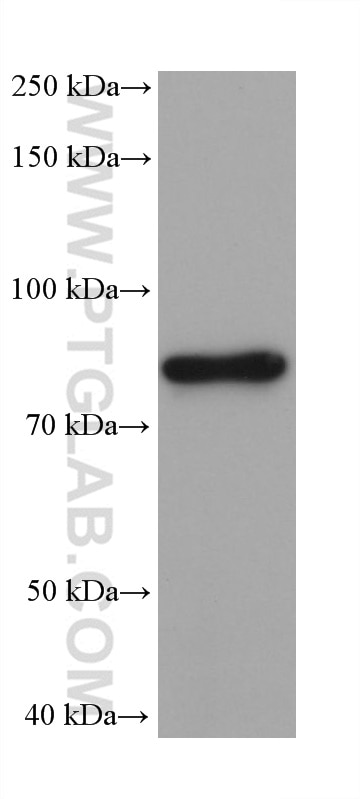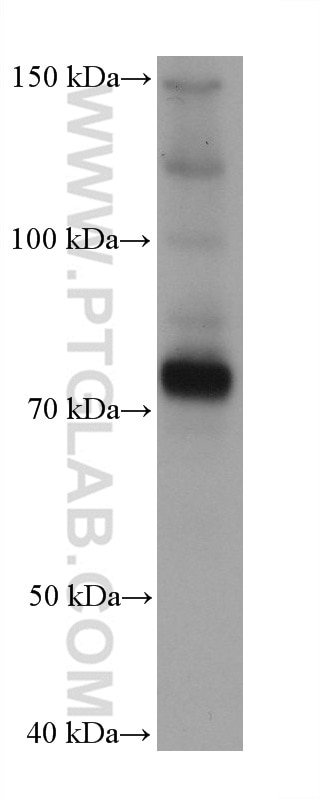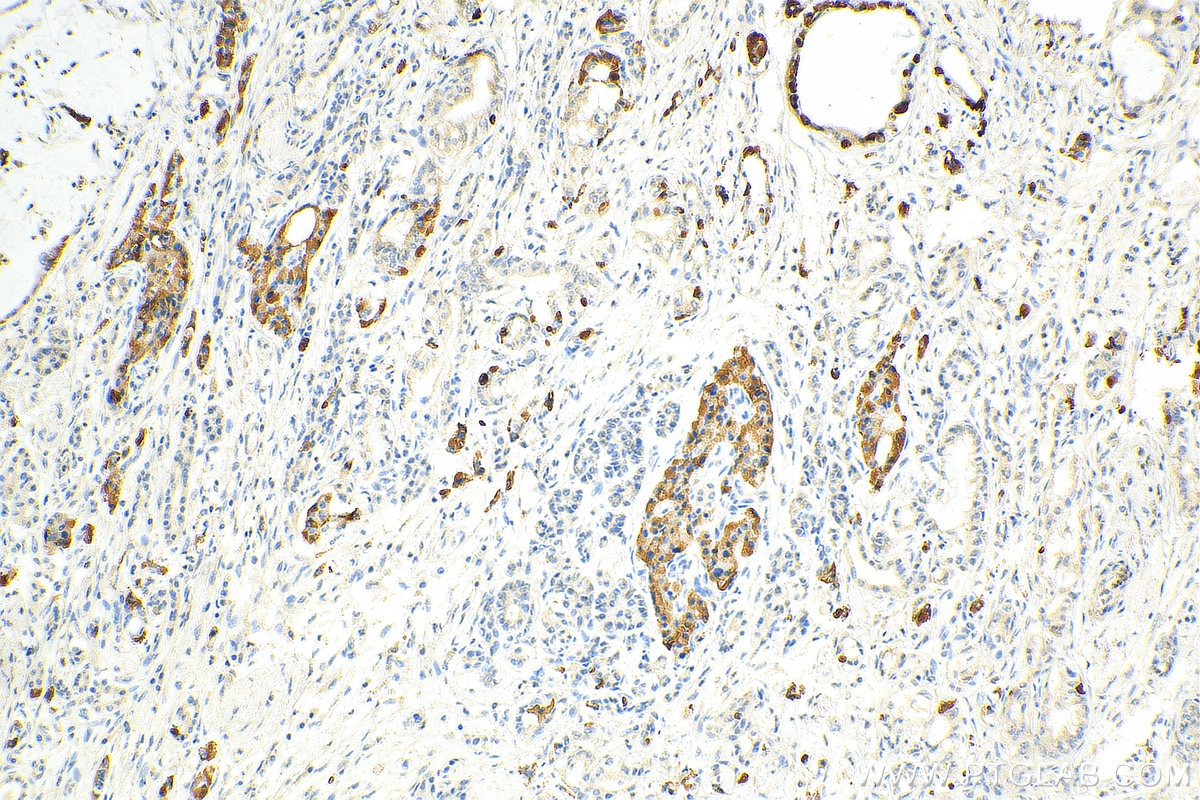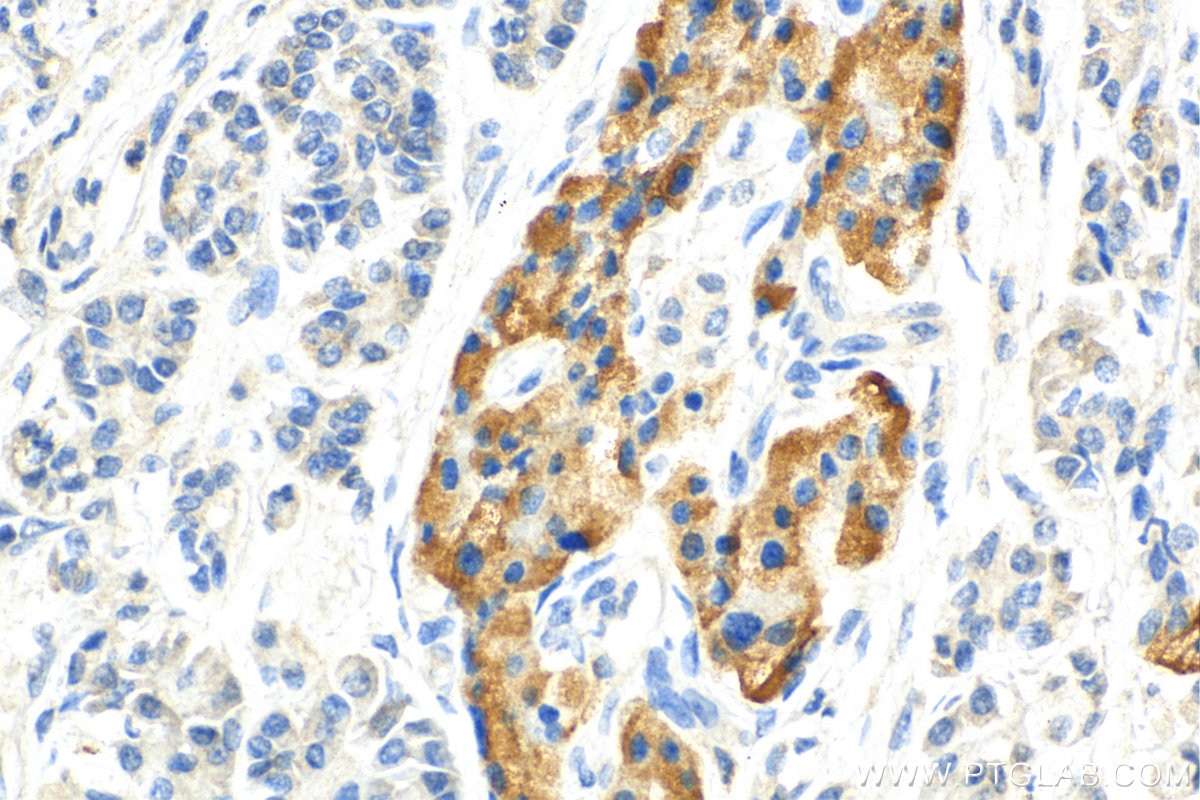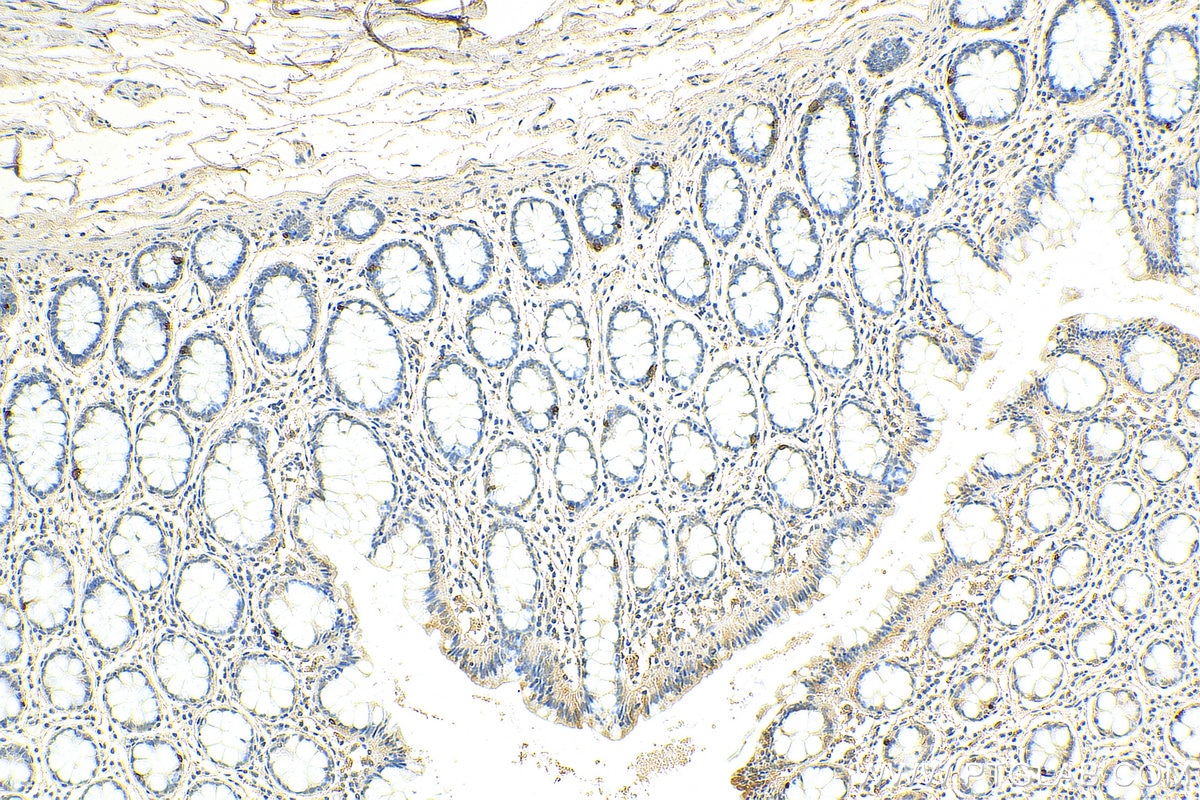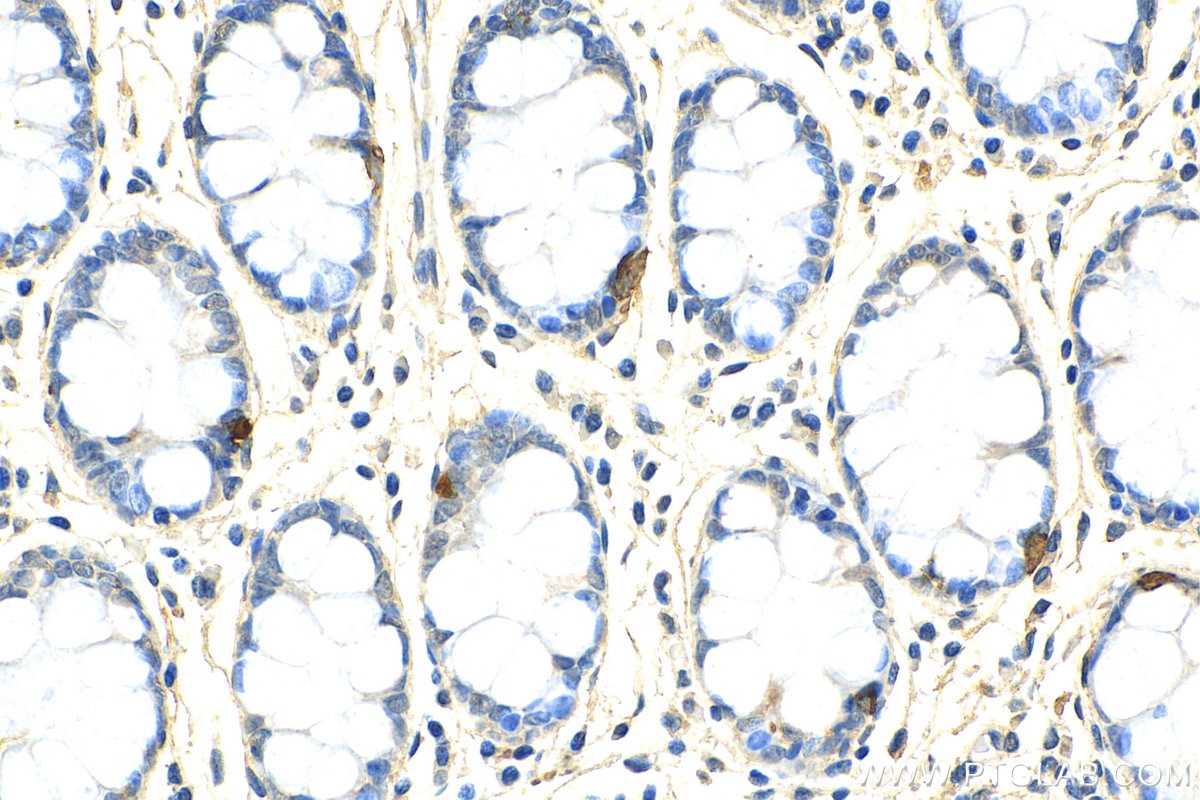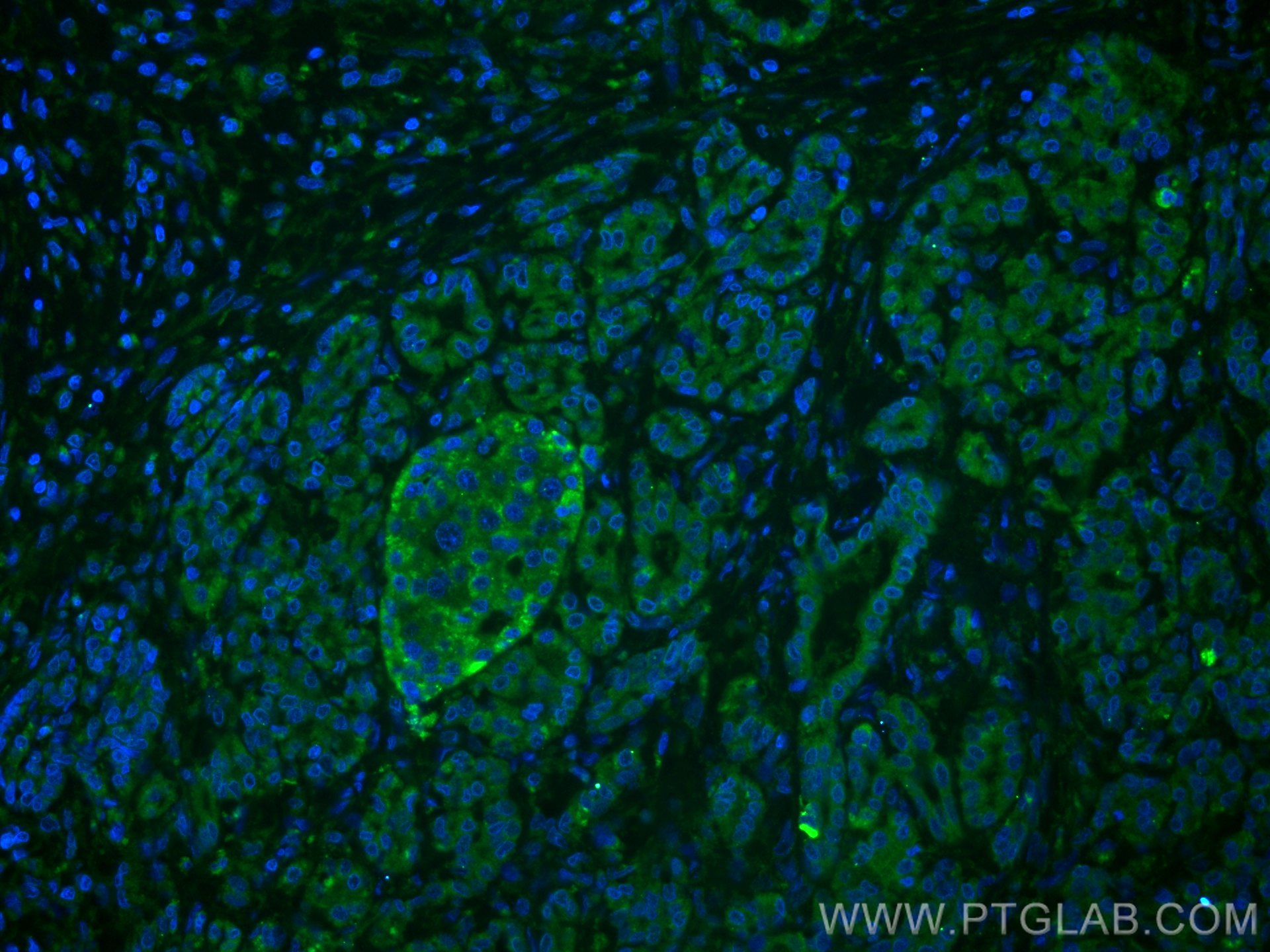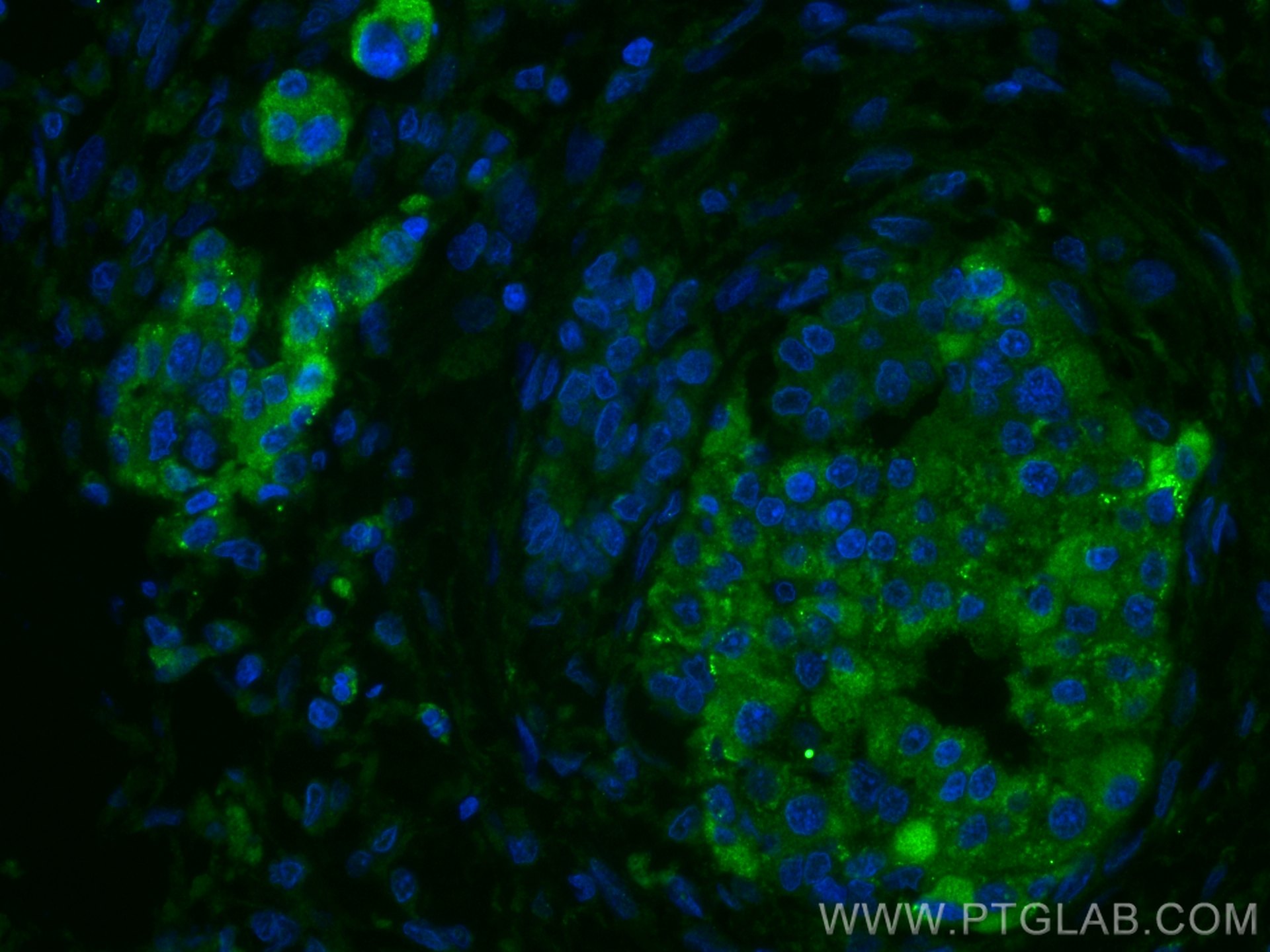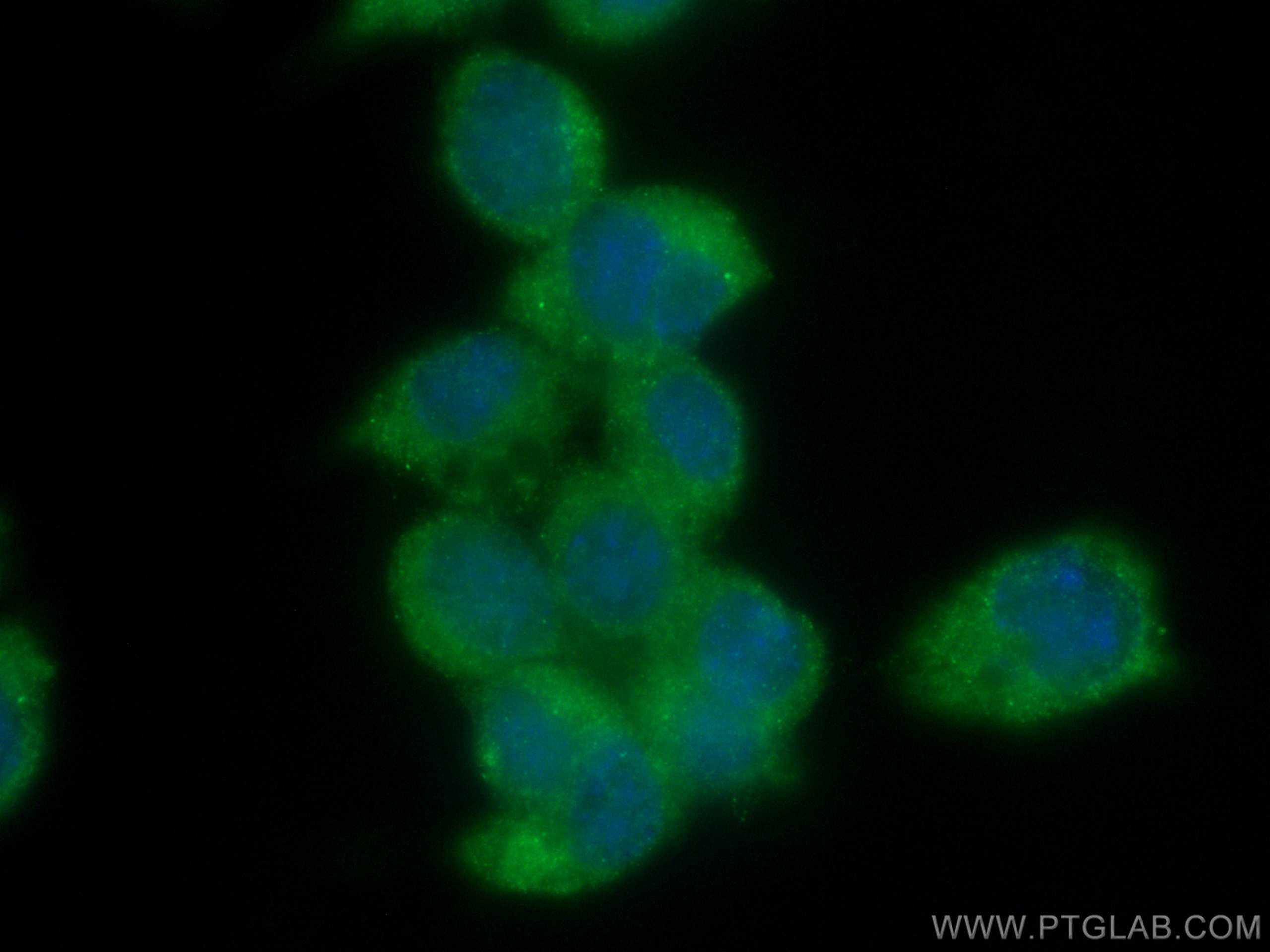Anticorps Monoclonal anti-Chromogranin A
Chromogranin A Monoclonal Antibody for WB, IHC, IF/ICC, IF-P, ELISA
Hôte / Isotype
Mouse / IgG1
Réactivité testée
Humain, porc, rat, souris
Applications
WB, IHC, IF/ICC, IF-P, ELISA
Conjugaison
Non conjugué
CloneNo.
2A7D11
N° de cat : 60135-2-Ig
Synonymes
Galerie de données de validation
Applications testées
| Résultats positifs en WB | tissu de glande surrénale de rat, cellules SH-SY5Y |
| Résultats positifs en IHC | tissu de cancer du pancréas humain, tissu de côlon humain il est suggéré de démasquer l'antigène avec un tampon de TE buffer pH 9.0; (*) À défaut, 'le démasquage de l'antigène peut être 'effectué avec un tampon citrate pH 6,0. |
| Résultats positifs en IF-P | tissu de cancer du pancréas humain, |
| Résultats positifs en IF/ICC | cellules Neuro-2a, |
Dilution recommandée
| Application | Dilution |
|---|---|
| Western Blot (WB) | WB : 1:2000-1:10000 |
| Immunohistochimie (IHC) | IHC : 1:1000-1:4000 |
| Immunofluorescence (IF)-P | IF-P : 1:200-1:800 |
| Immunofluorescence (IF)/ICC | IF/ICC : 1:200-1:800 |
| It is recommended that this reagent should be titrated in each testing system to obtain optimal results. | |
| Sample-dependent, check data in validation data gallery | |
Applications publiées
| WB | See 1 publications below |
| IHC | See 1 publications below |
| IF | See 5 publications below |
Informations sur le produit
60135-2-Ig cible Chromogranin A dans les applications de WB, IHC, IF/ICC, IF-P, ELISA et montre une réactivité avec des échantillons Humain, porc, rat, souris
| Réactivité | Humain, porc, rat, souris |
| Réactivité citée | rat, Humain, souris |
| Hôte / Isotype | Mouse / IgG1 |
| Clonalité | Monoclonal |
| Type | Anticorps |
| Immunogène | Chromogranin A Protéine recombinante Ag0807 |
| Nom complet | chromogranin A (parathyroid secretory protein 1) |
| Masse moléculaire calculée | 51 kDa |
| Poids moléculaire observé | 70-75 kDa |
| Numéro d’acquisition GenBank | BC006459 |
| Symbole du gène | Chromogranin A |
| Identification du gène (NCBI) | 1113 |
| Conjugaison | Non conjugué |
| Forme | Liquide |
| Méthode de purification | Purification par protéine G |
| Tampon de stockage | PBS with 0.02% sodium azide and 50% glycerol |
| Conditions de stockage | Stocker à -20°C. Stable pendant un an après l'expédition. L'aliquotage n'est pas nécessaire pour le stockage à -20oC Les 20ul contiennent 0,1% de BSA. |
Informations générales
Chromogranin A is a member of the granin family of neuroendocrine secretory proteins. It is located in secretory vesicles of neurons and endocrine cells. Chromogranin A is the precursor to several functional peptides including vasostatin, pancreastatin, catestatin and parastatin. These peptides negatively modulate the neuroendocrine function of the releasing cell (autocrine) or nearby cells (paracrine). CgA is one of the most used tumor markers in NET's (neuroendocrine tumors) , and elevated CgA concentrations have been demonstrated in serum or plasma of patients with different types of these tumors.
Protocole
| Product Specific Protocols | |
|---|---|
| WB protocol for Chromogranin A antibody 60135-2-Ig | Download protocol |
| IHC protocol for Chromogranin A antibody 60135-2-Ig | Download protocol |
| IF protocol for Chromogranin A antibody 60135-2-Ig | Download protocol |
| Standard Protocols | |
|---|---|
| Click here to view our Standard Protocols |
Publications
| Species | Application | Title |
|---|---|---|
Adv Sci (Weinh) Identification of PRDX5 as A Target for The Treatment of Castration-Resistant Prostate Cancer | ||
Stem Cell Res Ther Expansion of mouse castration-resistant intermediate prostate stem cells in vitro | ||
Front Microbiol Tongbian decoction restores intestinal microbiota and activates 5-hydroxytryptamine signaling: implication in slow transit constipation | ||
Int J Mol Sci Development of Sheep Intestinal Organoids for Studying Deoxynivalenol-Induced Toxicity | ||
Animals (Basel) IL-1β Induced Intestinal Inflammation Pathogenesis in East Friesian Sheep: Insights from Organoid Modeling | ||
Front Pharmacol Development of a small cell lung cancer organoid model to study cellular interactions and survival after chemotherapy |
